- Home
- Oscar Wilde
Selected Tales: Shorter Prose Pieces
Selected Tales: Shorter Prose Pieces Read online
Selected Tales: Shorter Prose Pieces
Oscar Wilde
This etext was prepared by David Price, email [email protected]
OSCAR WILDE—SHORTER PROSE PIECES
Contents:
Phrases And Philosophies for the Use of The Young Mrs. Langtry as Hester Grazebrook
Slaves of Fashion
Woman’s Dress
More Radical Ideas upon Dress Reform Costume
The American Invasion
Sermons in Stones at Bloomsbury
L’Envoi
PHRASES AND PHILOSOPHIES FOR THE USE OF THE YOUNG
The first duty in life is to be as artificial as possible. What the second duty is no one has as yet discovered.
Wickedness is a myth invented by good people to account for the curious attractiveness of others.
If the poor only had profiles there would be no difficulty in solving the problem of poverty.
Those who see any difference between soul and body have neither.
A really well-made buttonhole is the only link between Art and Nature.
Religions die when they are proved to be true. Science is the record of dead religions.
The well-bred contradict other people. The wise contradict themselves.
Nothing that actually occurs is of the smallest importance.
Dulness is the coming of age of seriousness.
In all unimportant matters, style, not sincerity, is the essential.
In all important matters, style, not sincerity, is the essential.
If one tells the truth one is sure, sooner or later, to be found out.
Pleasure is the only thing one should live for. Nothing ages like happiness.
It is only by not paying one’s bills that one can hope to live in the memory of the commercial classes.
No crime is vulgar, but all vulgarity is crime. Vulgarity is the conduct of others.
Only the shallow know themselves.
Time is waste of money.
One should always be a little improbable.
There is a fatality about all good resolutions. They are invariably made too soon.
The only way to atone for being occasionally a little overdressed is by being always absolutely overeducated.
To be premature is to be perfect.
Any preoccupation with ideas of what is right or wrong in conduct shows an arrested intellectual development.
Ambition is the last refuge of the failure.
A truth ceases to be true when more than one person believes in it.
In examinations the foolish ask questions that the wise cannot answer.
Greek dress was in its essence inartistic. Nothing should reveal the body but the body.
One should either be a work of art, or wear a work of art.
It is only the superficial qualities that last. Man’s deeper nature is soon found out.
Industry is the root of all ugliness.
The ages live in history through their anachronisms.
It is only the gods who taste of death. Apollo has passed away, but Hyacinth, whom men say he slew, lives on. Nero and Narcissus are always with us.
The old believe everything: the middle-aged suspect everything; the young know everything.
The condition of perfection is idleness: the aim of perfection is youth.
Only the great masters of style ever succeeded in being obscure.
There is something tragic about the enormous number of young men there are in England at the present moment who start life with perfect profiles, and end by adopting some useful profession.
To love oneself is the beginning of a life-long romance.
MRS. LANGTRY AS HESTER GRAZEBROOK
It is only in the best Greek gems, on the silver coins of Syracuse, or among the marble figures of the Parthenon frieze, that one can find the ideal representation of the marvellous beauty of that face which laughed through the leaves last night as Hester Grazebrook.
Pure Greek it is, with the grave low forehead, the exquisitely arched brow; the noble chiselling of the mouth, shaped as if it were the mouthpiece of an instrument of music; the supreme and splendid curve of the cheek; the augustly pillared throat which bears it all: it is Greek, because the lines which compose it are so definite and so strong, and yet so exquisitely harmonized that the effect is one of simple loveliness purely: Greek, because its essence and its quality, as is the quality of music and of architecture, is that of beauty based on absolutely mathematical laws.
But while art remains dumb and immobile in its passionless serenity, with the beauty of this face it is different: the grey eyes lighten into blue or deepen into violet as fancy succeeds fancy; the lips become flower-like in laughter or, tremulous as a bird’s wing, mould themselves at last into the strong and bitter moulds of pain or scorn. And then motion comes, and the statue wakes into life. But the life is not the ordinary life of common days; it is life with a new value given to it, the value of art: and the charm to me of Hester Grazebrook’s acting in the first scene of the play last night was that mingling of classic grace with absolute reality which is the secret of all beautiful art, of the plastic work of the Greeks and of the pictures of Jean Francois Millet equally.
I do not think that the sovereignty and empire of women’s beauty has at all passed away, though we may no longer go to war for them as the Greeks did for the daughter of Leda. The greatest empire still remains for them—the empire of art. And, indeed, this wonderful face, seen last night for the first time in America, has filled and permeated with the pervading image of its type the whole of our modern art in England. Last century it was the romantic type which dominated in art, the type loved by Reynolds and Gainsborough, of wonderful contrasts of colour, of exquisite and varying charm of expression, but without that definite plastic feeling which divides classic from romantic work. This type degenerated into mere facile prettiness in the hands of lesser masters, and, in protest against it, was created by the hands of the Pre-Raphaelites a new type, with its rare combination of Greek form with Florentine mysticism. But this mysticism becomes over-strained and a burden, rather than an aid to expression, and a desire for the pure Hellenic joy and serenity came in its place; and in all our modern work, in the paintings of such men as Albert Moore and Leighton and Whistler, we can trace the influence of this single face giving fresh life and inspiration in the form of a new artistic ideal.
SLAVES OF FASHION
Miss Leffler-Arnim’s statement, in a lecture delivered recently at St. Saviour’s Hospital, that “she had heard of instances where ladies were so determined not to exceed the fashionable measurement that they had actually held on to a cross-bar while their maids fastened the fifteen-inch corset,” has excited a good deal of incredulity, but there is nothing really improbable in it. From the sixteenth century to our own day there is hardly any form of torture that has not been inflicted on girls, and endured by women, in obedience to the dictates of an unreasonable and monstrous Fashion. “In order to obtain a real Spanish figure,” says Montaigne, “what a Gehenna of suffering will not women endure, drawn in and compressed by great coches entering the flesh; nay, sometimes they even die thereof!” “A few days after my arrival at school,” Mrs. Somerville tells us in her memoirs, “although perfectly straight and well made, I was enclosed in stiff stays, with a steel busk in front; while above my frock, bands drew my shoulders back till the shoulder-blades met. Then a steel rod with a semi-circle, which went under my chin, was clasped to the steel busk in my stays. In this constrained state I and most of the younger girls had to prepare our lessons”; and in the life of Miss Edgeworth we read that, being sent to a certain fashionable establishment, “she underwen
t all the usual tortures of back-boards, iron collars and dumbs, and also (because she was a very tiny person) the unusual one of being hung by the neck to draw out the muscles and increase the growth,” a signal failure in her case.
Indeed, instances of absolute mutilation and misery are so common in the past that it is unnecessary to multiply them; but it is really sad to think that in our own day a civilized woman can hang on to a cross-bar while her maid laces her waist into a fifteen-inch circle. To begin with, the waist is not a circle at all, but an oval; nor can there be any greater error than to imagine that an unnaturally small waist gives an air of grace, or even of slightness, to the whole figure. Its effect, as a rule, is simply to exaggerate the width of the shoulders and the hips; and those whose figures possess that stateliness which is called stoutness by the vulgar, convert what is a quality into a defect by yielding to the silly edicts of Fashion on the subject of tight-lacing. The fashionable English waist, also, is not merely far too small, and consequently quite out of proportion to the rest of the figure, but it is worn far too low down. I use the expression “worn”
advisedly, for a waist nowadays seems to be regarded as an article of apparel to be put on when and where one likes. A long waist always implies shortness of the lower limbs, and, from the artistic point of view, has the effect of diminishing the height; and I am glad to see that many of the most charming women in Paris are returning to the idea of the Directoire style of dress. This style is not by any means perfect, but at least it has the merit of indicating the proper position of the waist. I feel quite sure that all English women of culture and position will set their faces against such stupid and dangerous practices as are related by Miss Leffler-Arnim. Fashion’s motto is: Il faut souffrir pour etre belle; but the motto of art and of common-sense is: Il faut etre bete pour souffrir.
Talking of Fashion, a critic in the Pall Mall Gazelle expresses his surprise that I should have allowed an illustration of a hat, covered with “the bodies of dead birds,” to appear in the first number of the Woman’s World; and as I have received many letters on the subject, it is only right that I should state my exact position in the matter. Fashion is such an essential part of the mundus muliebris of our day, that it seems to me absolutely necessary that its growth, development, and phases should be duly chronicled; and the historical and practical value of such a record depends entirely upon its perfect fidelity to fact. Besides, it is quite easy for the children of light to adapt almost any fashionable form of dress to the requirements of utility and the demands of good taste. The Sarah Bernhardt tea-gown, for instance, figured in the present issue, has many good points about it, and the gigantic dress-improver does not appear to me to be really essential to the mode; and though the Postillion costume of the fancy dress ball is absolutely detestable in its silliness and vulgarity, the so-called Late Georgian costume in the same plate is rather pleasing. I must, however, protest against the idea that to chronicle the development of Fashion implies any approval of the particular forms that Fashion may adopt.
WOMAN’S DRESS
The “Girl Graduate” must of course have precedence, not merely for her sex but for her sanity: her letter is extremely sensible. She makes two points: that high heels are a necessity for any lady who wishes to keep her dress clean from the Stygian mud of our streets, and that without a tight corset the ordinary number of petticoats and etceteras’ cannot be properly or conveniently held up. Now, it is quite true that as long as the lower garments are suspended from the hips a corset is an absolute necessity; the mistake lies in not suspending all apparel from the shoulders. In the latter case a corset becomes useless, the body is left free and unconfined for respiration and motion, there is more health, and consequently more beauty. Indeed all the most ungainly and uncomfortable articles of dress that fashion has ever in her folly prescribed, not the tight corset merely, but the farthingale, the vertugadin, the hoop, the crinoline, and that modern monstrosity the so-called “dress improver” also, all of them have owed their origin to the same error, the error of not seeing that it is from the shoulders, and from the shoulders only, that all garments should be hung.
And as regards high heels, I quite admit that some additional height to the shoe or boot is necessary if long gowns are to be worn in the street; but what I object to is that the height should be given to the heel only, and not to the sole of the foot also.
The modern high-heeled boot is, in fact, merely the clog of the time of Henry VI., with the front prop left out, and its inevitable effect is to throw the body forward, to shorten the steps, and consequently to produce that want of grace which always follows want of freedom.
Why should clogs be despised? Much art has been expended on clogs.
They have been made of lovely woods, and delicately inlaid with ivory, and with mother-of-pearl. A clog might be a dream of beauty, and, if not too high or too heavy, most comfortable also.
But if there be any who do not like clogs, let them try some adaptation of the trouser of the Turkish lady, which is loose round the limb and tight at the ankle.
The “Girl Graduate,” with a pathos to which I am not insensible, entreats me not to apotheosize “that awful, befringed, beflounced, and bekilted divided skirt.” Well, I will acknowledge that the fringes, the flounces, and the kilting do certainly defeat the whole object of the dress, which is that of ease and liberty; but I regard these things as mere wicked superfluities, tragic proofs that the divided skirt is ashamed of its own division. The principle of the dress is good, and, though it is not by any means perfection, it is a step towards it.
Here I leave the “Girl Graduate,” with much regret, for Mr.
Wentworth Huyshe. Mr. Huyshe makes the old criticism that Greek dress is unsuited to our climate, and, to me the somewhat new assertion, that the men’s dress of a hundred years ago was preferable to that of the second part of the seventeenth century, which I consider to have been the exquisite period of English costume.
Now, as regards the first of these two statements, I will say, to begin with, that the warmth of apparel does not depend really on the number of garments worn, but on the material of which they are made. One of the chief faults of modern dress is that it is composed of far too many articles of clothing, most of which are of the wrong substance; but over a substratum of pure wool, such as is supplied by Dr. Jaeger under the modern German system, some modification of Greek costume is perfectly applicable to our climate, our country and our century. This important fact has already been pointed out by Mr. E. W. Godwin in his excellent, though too brief handbook on Dress, contributed to the Health Exhibition. I call it an important fact because it makes almost any form of lovely costume perfectly practicable in our cold climate. Mr. Godwin, it is true, points out that the English ladies of the thirteenth century abandoned after some time the flowing garments of the early Renaissance in favour of a tighter mode, such as Northern Europe seems to demand. This I quite admit, and its significance; but what I contend, and what I am sure Mr.
Godwin would agree with me in, is that the principles, the laws of Greek dress may be perfectly realized, even in a moderately tight gown with sleeves: I mean the principle of suspending all apparel from the shoulders, and of relying for beauty of effect not on the stiff ready-made ornaments of the modern milliner—the bows where there should be no bows, and the flounces where there should be no flounces—but on the exquisite play of light and line that one gets from rich and rippling folds. I am not proposing any antiquarian revival of an ancient costume, but trying merely to point out the right laws of dress, laws which are dictated by art and not by archaeology, by science and not by fashion; and just as the best work of art in our days is that which combines classic grace with absolute reality, so from a continuation of the Greek principles of beauty with the German principles of health will come, I feel certain, the costume of the future.
And now to the question of men’s dress, or rather to Mr. Huyshe’s claim of the superiority, in point of costume, of the la
st quarter of the eighteenth century over the second quarter of the seventeenth. The broad-brimmed hat of 1640 kept the rain of winter and the glare of summer from the face; the same cannot be said of the hat of one hundred years ago, which, with its comparatively narrow brim and high crown, was the precursor of the modern “chimney-pot”: a wide turned-down collar is a healthier thing than a strangling stock, and a short cloak much more comfortable than a sleeved overcoat, even though the latter may have had “three capes”; a cloak is easier to put on and off, lies lightly on the shoulder in summer, and wrapped round one in winter keeps one perfectly warm. A doublet, again, is simpler than a coat and waistcoat; instead of two garments one has one; by not being open also it protects the chest better.
Short loose trousers are in every way to be preferred to the tight knee-breeches which often impede the proper circulation of the blood; and finally, the soft leather boots which could be worn above or below the knee, are more supple, and give consequently more freedom, than the stiff Hessian which Mr. Huyshe so praises.
I say nothing about the question of grace and picturesqueness, for I suppose that no one, not even Mr. Huyshe, would prefer a maccaroni to a cavalier, a Lawrence to a Vandyke, or the third George to the first Charles; but for ease, warmth and comfort this seventeenth-century dress is infinitely superior to anything that came after it, and I do not think it is excelled by any preceding form of costume. I sincerely trust that we may soon see in England some national revival of it.
MORE RADICAL IDEAS UPON DRESS REFORM
I have been much interested at reading the large amount of correspondence that has been called forth by my recent lecture on Dress. It shows me that the subject of dress reform is one that is occupying many wise and charming people, who have at heart the principles of health, freedom, and beauty in costume, and I hope that “H. B. T.” and “Materfamilias” will have all the real influence which their letters—excellent letters both of them—
certainly deserve.
I turn first to Mr. Huyshe’s second letter, and the drawing that accompanies it; but before entering into any examination of the theory contained in each, I think I should state at once that I have absolutely no idea whether this gentleman wears his hair long or short, or his cuffs back or forward, or indeed what he is like at all. I hope he consults his own comfort and wishes in everything which has to do with his dress, and is allowed to enjoy that individualism in apparel which he so eloquently claims for himself, and so foolishly tries to deny to others; but I really could not take Mr. Wentworth Huyshe’s personal appearance as any intellectual basis for an investigation of the principles which should guide the costume of a nation. I am not denying the force, or even the popularity, of the “‘Eave arf a brick” school of criticism, but I acknowledge it does not interest me. The gamin in the gutter may be a necessity, but the gamin in discussion is a nuisance. So I will proceed at once to the real point at issue, the value of the late eighteenth-century costume over that worn in the second quarter of the seventeenth: the relative merits, that is, of the principles contained in each. Now, as regards the eighteenth-century costume, Mr. Wentworth Huyshe acknowledges that he has had no practical experience of it at all; in fact he makes a pathetic appeal to his friends to corroborate him in his assertion, which I do not question for a moment, that he has never been “guilty of the eccentricity” of wearing himself the dress which he proposes for general adoption by others. There is something so naive and so amusing about this last passage in Mr. Huyshe’s letter that I am really in doubt whether I am not doing him a wrong in regarding him as having any serious, or sincere, views on the question of a possible reform in dress; still, as irrespective of any attitude of Mr. Huyshe’s in the matter, the subject is in itself an interesting one, I think it is worth continuing, particularly as I have myself worn this late eighteenth-century dress many times, both in public and in private, and so may claim to have a very positive right to speak on its comfort and suitability. The particular form of the dress I wore was very similar to that given in Mr. Godwin’s handbook, from a print of Northcote’s, and had a certain elegance and grace about it which was very charming; still, I gave it up for these reasons:- After a further consideration of the laws of dress I saw that a doublet is a far simpler and easier garment than a coat and waistcoat, and, if buttoned from the shoulder, far warmer also, and that tails have no place in costume, except on some Darwinian theory of heredity; from absolute experience in the matter I found that the excessive tightness of knee-breeches is not really comfortable if one wears them constantly; and, in fact, I satisfied myself that the dress is not one founded on any real principles. The broad-brimmed hat and loose cloak, which, as my object was not, of course, historical accuracy but modern ease, I had always worn with the costume in question, I have still retained, and find them most comfortable.

 The Picture of Dorian Gray
The Picture of Dorian Gray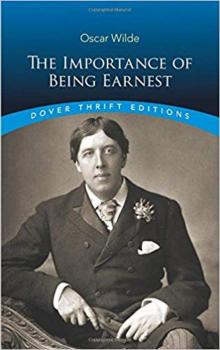 The Importance of Being Earnest
The Importance of Being Earnest An Ideal Husband
An Ideal Husband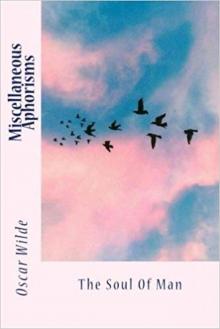 Miscellaneous Aphorisms; The Soul of Man
Miscellaneous Aphorisms; The Soul of Man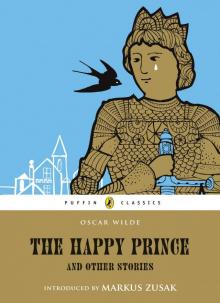 The Happy Prince and Other Tales
The Happy Prince and Other Tales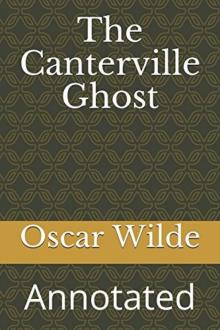 The Canterville Ghost: Annotated
The Canterville Ghost: Annotated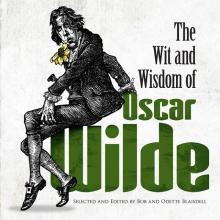 The Wit and Wisdom of Oscar Wilde
The Wit and Wisdom of Oscar Wilde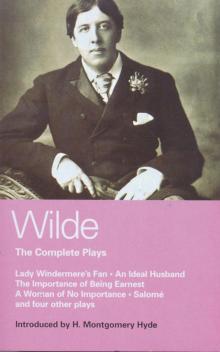 The Complete Plays
The Complete Plays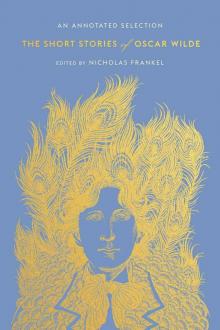 The Short Stories of Oscar Wilde
The Short Stories of Oscar Wilde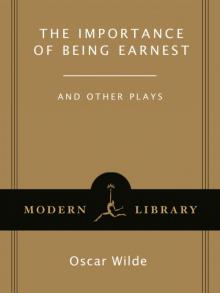 The Importance of Being Earnest: And Other Plays
The Importance of Being Earnest: And Other Plays The Happy Prince (Oscar Wilde Classics)
The Happy Prince (Oscar Wilde Classics) Shorter Prose Pieces
Shorter Prose Pieces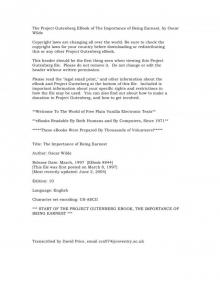 Importance of Being Earnest
Importance of Being Earnest Selected Tales: Shorter Prose Pieces
Selected Tales: Shorter Prose Pieces The Penny Dreadfuls MEGAPACK™
The Penny Dreadfuls MEGAPACK™ The Complete Short Fiction
The Complete Short Fiction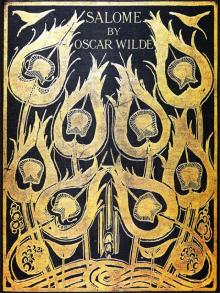 The Illustrated Salomé in English & French (with Active Table of Contents)
The Illustrated Salomé in English & French (with Active Table of Contents)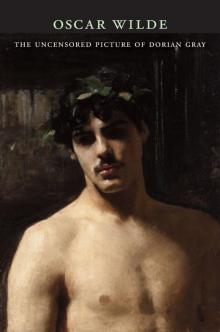 The Uncensored Picture of Dorian Gray
The Uncensored Picture of Dorian Gray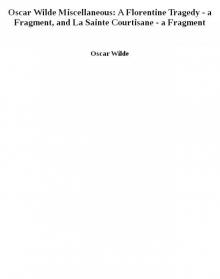 Oscar Wilde Miscellaneous: A Florentine Tragedy - a Fragment, and La Sainte Courtisane - a Fragment
Oscar Wilde Miscellaneous: A Florentine Tragedy - a Fragment, and La Sainte Courtisane - a Fragment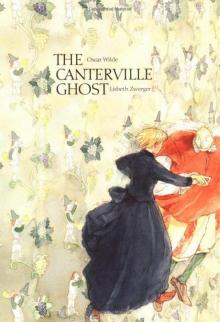 The Canterville Ghost (Illustrated by WALLACE GOLDSMITH)
The Canterville Ghost (Illustrated by WALLACE GOLDSMITH) Complete Works of Oscar Wilde
Complete Works of Oscar Wilde The Picture of Dorian Gray: The Uncensored Original Text (Annotated) (First Ebook Edition)
The Picture of Dorian Gray: The Uncensored Original Text (Annotated) (First Ebook Edition)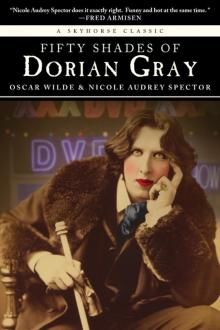 Fifty Shades of Dorian Gray
Fifty Shades of Dorian Gray Oscar Wilde's Stories for All Ages
Oscar Wilde's Stories for All Ages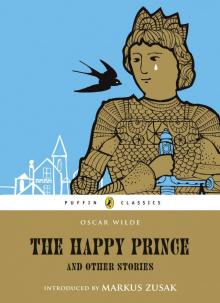 The Happy Prince & Other Stories (Puffin Classics Relaunch)
The Happy Prince & Other Stories (Puffin Classics Relaunch)